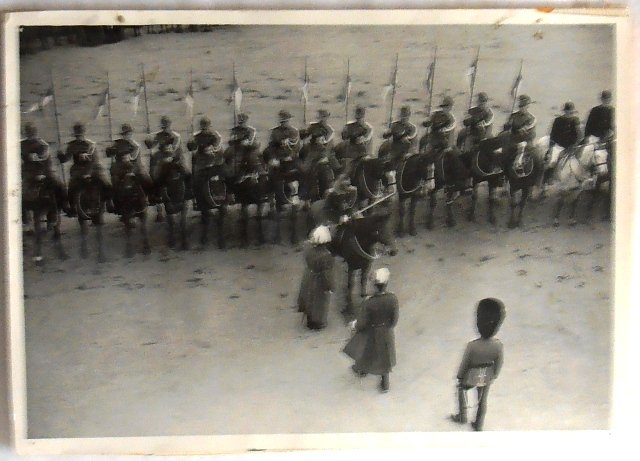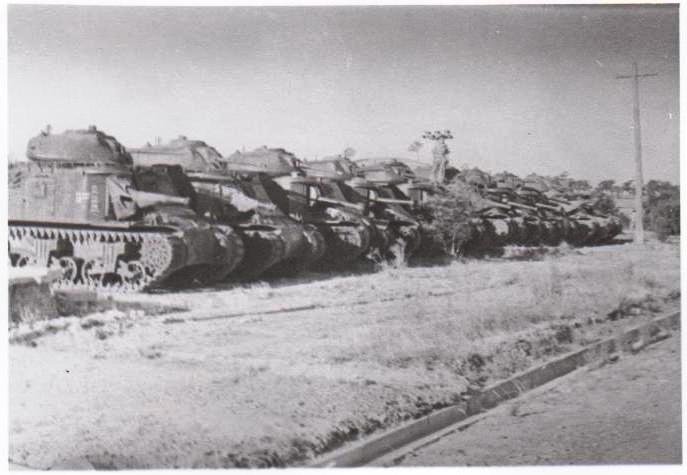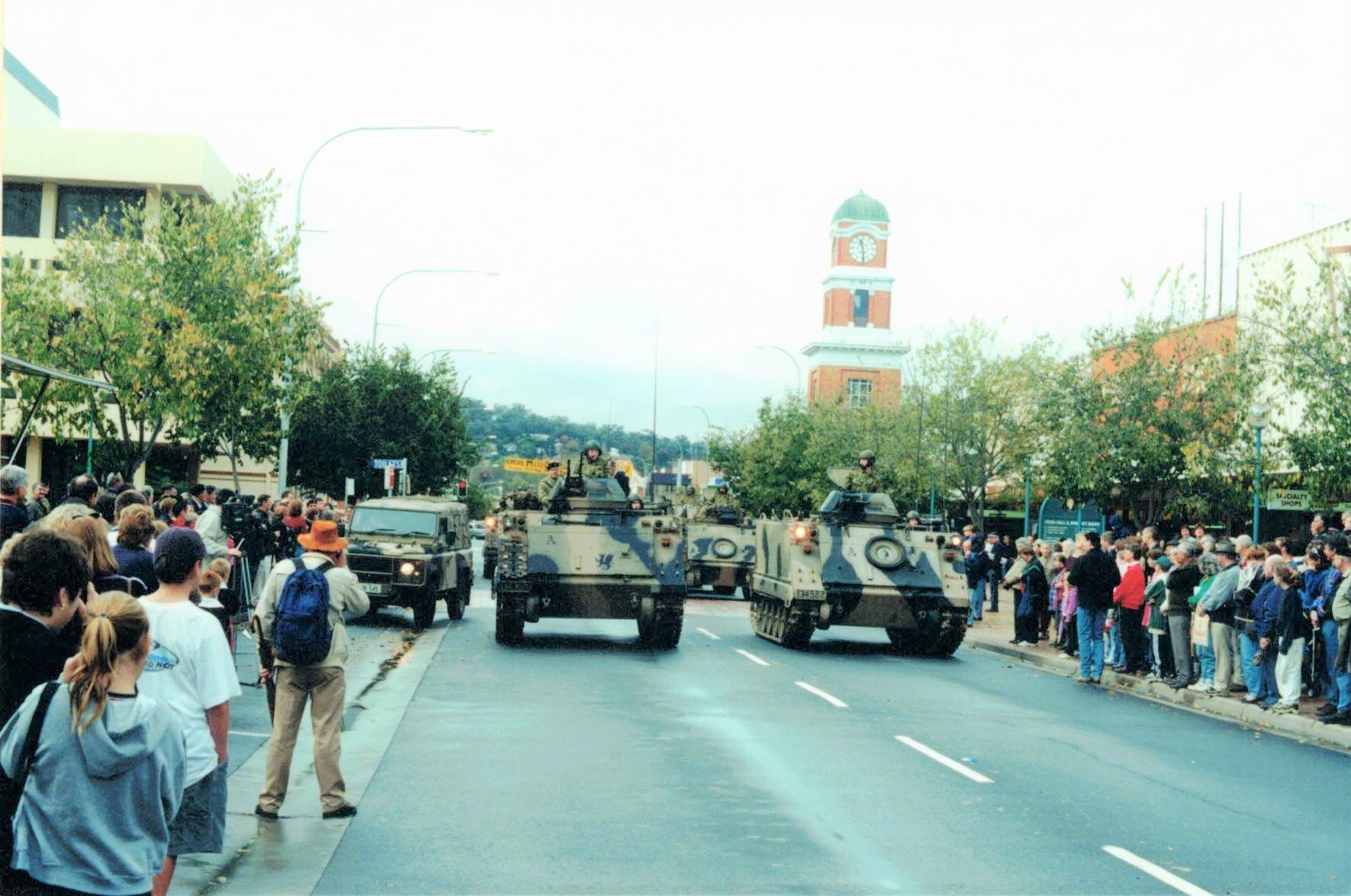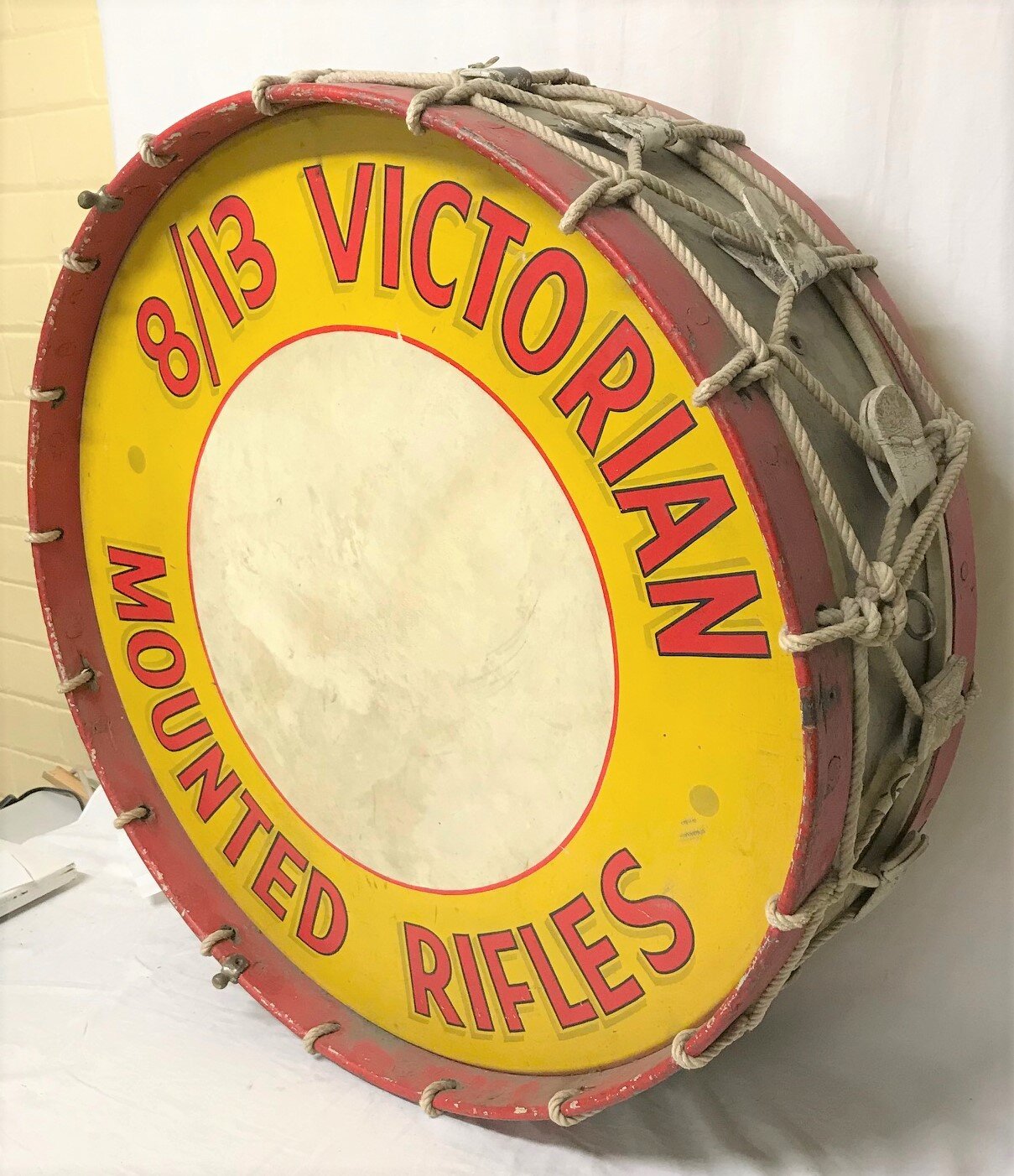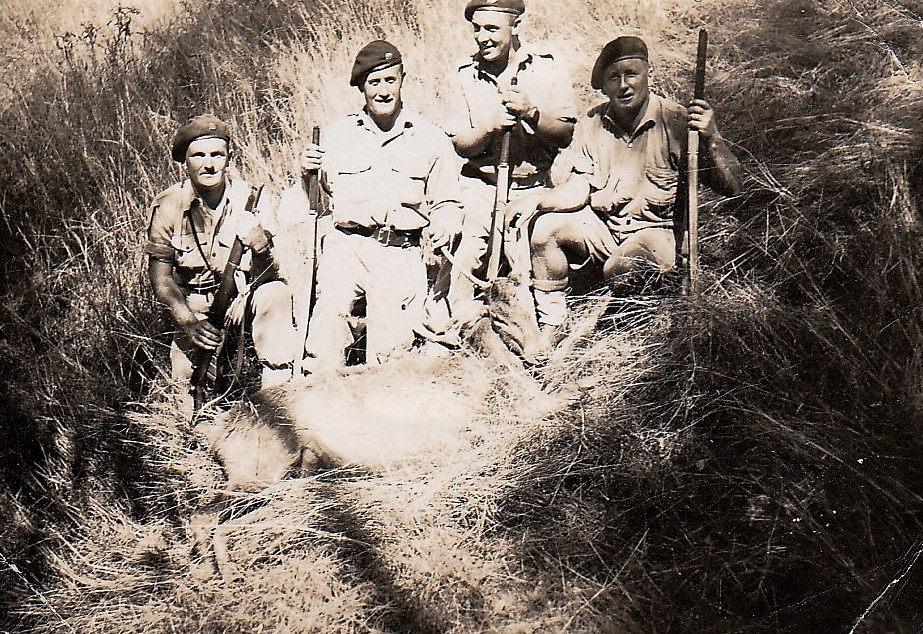VICE-REGAL ESCORTS
In Australia the term vice-regal refers to persons filling the roles of governor general or state governor. On ceremonial occasions they are afforded an escort. Units of our lineage have provided escorts on multiple occasions. I will look at six occasions, the first in 1938 and the most recent 1981. Five were horse mounted and one AFV mounted.
October and November 1938 was a busy time for 8th (Indi) and 20th (Victorian Mounted Rifles) Light Horse Regiments when on no less than three occasions they provided escorts, once for the Governor of Victoria and twice for the Governor General.
Lord Huntington, Governor of Victoria, and Lady Huntington arrived at Benalla by train on Friday evening 21 October 1938. The following morning they were met by a detachment from 8th Light Horse Regiment commanded by Lieutenant Nelson and escorted to a public gathering at the Gardens and later to the Showgrounds where the Governor inspected the troops.
Immediately following the departure of the Governor, the Governor General, Lord Gowrie and Lady Gowrie arrived at Benalla enroute to Shepparton which was celebrating its centenary. Lord Gowrie was opening the Grand National Show. A detachment from 20th Light Horse met the vice-regal car on the Benalla road on the morning of 26 October and escorted it to the Town Hall where a mayoral reception was held prior to moving to the showground. The newspaper commented the mounted escort “presented a fine spectacle with their lances.”
While in Shepparton, Lord Gowrie announced that the next Governor General would be the King’s younger brother, the Duke of Kent. “It was a practical demonstration of His Majesty's interest in us, and would be the means of bringing us in closer touch with the Throne”, he said. It was not to be however, World War Two intervened and Lord Gowrie remained Governor General till 1945 when he was succeeded by the Duke of Gloucester, the Duke of Kent having been killed in an air crash in August 1942 while serving in the RAF.
Framed photograph of an extract from the “Benalla Ensign of Friday November 4 1938 reporting on the Governor General's escort drawn from the 8th Light Horse at the Melbourne Cup. [6105]
The 8th Light Horse was back in the action on 1 November when it provided an escort to Lord and Lady Gowrie to the Melbourne Cup at Flemington. The escort was commanded by Lieutenant FC Trickey. Soldiers making up the detachment were drawn from Benalla, Euroa, Wangaratta, Tallangatta, Wahgunyah, Wodonga and Rutherglen Troops. Incidentally, New Zealand horse, Catalogue won the Cup.
On 17 July 1939, Major General Sir Winston Dugan and Lady Dugan disembarked from SS “Ulysses” at Port Melbourne and were met by a mounted escort comprised Lieutenant HG Fyffe, Sergeant C Thorburn, Trumpeter G Pyle and 12 troopers drawn from the Tocumwal Troop, 20th Light Horse Regiment. The newly arrived dignitaries were driven in procession to Parliament House where Sir Winston was sworn in as Governor of Victoria.
Framed photograph of the escort drawn from Tocumwal Troop 20th (Victorian Mounted Rifles) Light Horse Regiment at Government House Melbourne, 17 July 1939. The escort was commanded by Lieutenant HG (Bob) Fyffe. [0699]
Photograph showing Major General Sir Winston Dugan speaking to the escort commander Lieutenant HG (Bob) Fyffe. During World War Two, Lieutenant Fyffe served with 6th Division Cavalry Regiment in North Africa where he was awarded the Military Cross. [0701]
A similar procession but with a very different look occurred on 18 October 1949 when Sir Dallas Brooks and his family arrived on the SS “Orcades”, Sir Dallas to take up the post of Governor of Victoria. On this occasion the vice-regal party was met by an escort provided by 4th/19th Prince of Wales’s Light Horse Regiment under the command of Captain Joe Byrne. The escort, mounted in Lynx scout cars and Staghound armoured cars was almost swamped by the Melbourne crowd as it proceeded slowly through the city to Government House.
Lynx Scout Car carrying Captain J Byrne commanding the mounted escort for Governor of Victoria, Sir Dallas Brooks and Lady Brooks, Melbourne, 18 October 1949. Escort was drawn from 4th/19th Prince of Wales’s Light Horse Regiment. [3093.02]
Staghound Armoured Car, part of the 4th/19th Prince of Wales’s Light Horse escort, moving through the huge Melbourne crowd which greeted Sir Dallas and Lady Brooks on their arrival in the city, 18 October 1949. [3093.05]
Horses made their return on 4 December 1981 when Sir Zelman Cowan, Governor General of Australia, made a visit to Bandiana to present the Sovereign's Banner to the Royal Australian Army Ordnance Corps (RAAOC). The 8/13 Victorian Mounted Rifles Light Horse Heritage Troop provided a mounted escort for Sir Zelman and Lady Cowan.
Mounted troops from 8/13th Victorian Mounted Rifles Heritage Troop with drawn sabres escorting the Governor General Sir Zelman Cowan and Lady Cowan at Bandiana 4 December 1981. Escort is commanded by Captain Robert Morrison, at left, riding in front of vice-regal car. [3087.09]
The escort was under the command of Captain (later Major) Robert Morrison, a keen horseman, who had been the prime mover in raising the Heritage Troop. All riders were serving soldiers of A Squadron 8/13 Victorian Mounted Rifles and their horsed activities were additional to their normal training responsibilities. In contrast to previous escorts the riders carried swords not lances.
In an interesting connection this photograph shows Mr H G (Bob) Fyffe presenting Captain Morrison with a certificate of appreciation from RAAOC for the escort provided to Sir Zelman Cowan. Bob Fyffe had commanded the escort for Major General Sir Winston Dugan in 1939. [3099.08]
The 8/13 Victorian Mounted Rifles Light Horse Heritage Troop carried out other escorts notably on the occasion of the visit to Puckapunyal by Prince Charles and Princess Diana, 31 October 1985, but that is another story.


